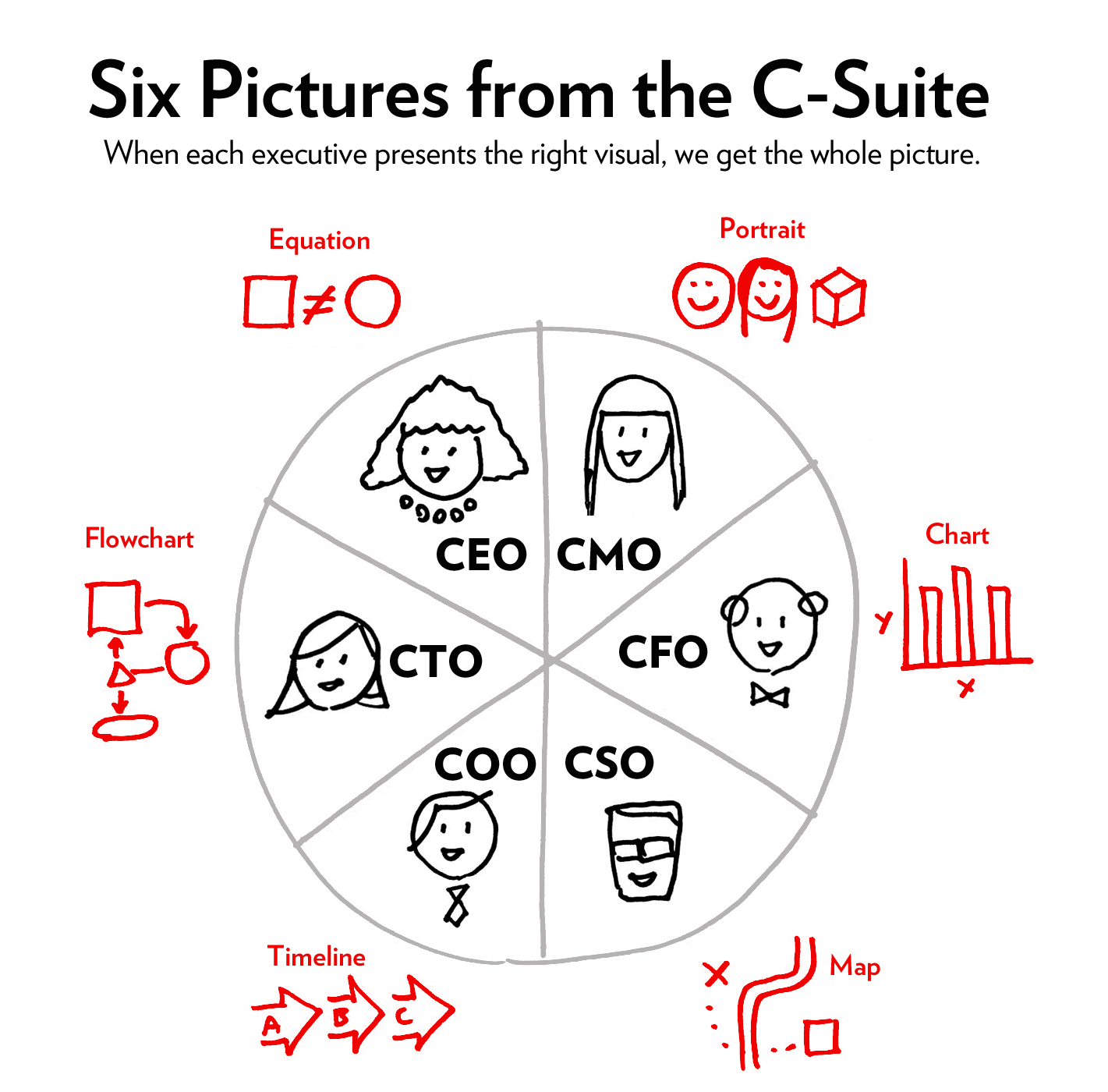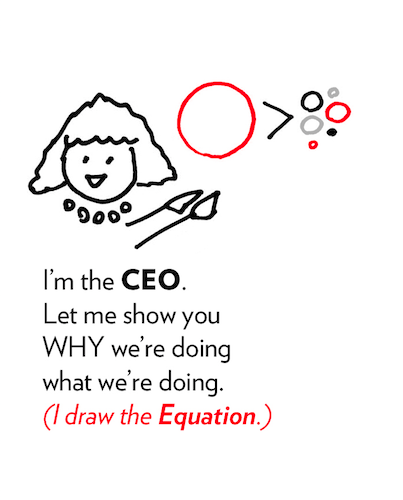The six pictures every successful leadership team must be able to draw.
The Visual Leadership Test
What is the simplest way to see if a leadership team is up-to-speed, on the same page, and in possession of an achievable vision? Ask them to draw.

Over the past twenty-five years, I’ve worked with executive teams around the world. The scariest lesson is how consistently teams that thought they knew what they were thinking and thought they had talked it through well leave the executive presentation – and realize they really don’t have a clear idea what each other just said. A solution? Ask each member of the team to contribute the JUST ONE PICTURE that best illustrates their individual contribution to the team and the organization.

The Chief Executive Officer draws the Visual Equation.
As the leader of the organization, all eyes fall turn to the CEO whenever anything happens – good or bad. The best way the CEO can show WHY she has made the decisions she has is by showing a simple “visual equation.”
Think of this as the moral of the story made visual; the simplest possible visual that says the most in the clearest possible way.

The Chief Marketing Officer draws the Portrait.
If there is anybody in the organization who better know WHO our audiences are and WHAT we are offering them, it’s the CMO. (How can we market if we don’t know to whom? Or what we’re trying to tell them?)
When the CMO needs to say “we are doing THIS for THESE PEOPLE,” nothing beats a simple, iconic portrait illustrating the who and the what.

The Chief Financial Officer draws the Chart.
Who owns the top line, the bottom line, and every line in-between? The CFO does. So when Wall Street or the investors comes knocking, it’s time for the CFO to share the charts.
How much? This much. What are the financial trends? These lines.
If the CEO can’t show the numbers in a way that makes sense, how can we be sure he knows them himself?

The Chief Strategy Officer draws the Map.
It is the job of the CSO to sketch out the opportunity landscape, plot in the competitions’ positions, and map in the right moves. That requires a map. The CSO better be able to draw it.
It is also the CSO’s job to make sure everyone else sees where those moves are going to take the organization – so that map better be clear, readable – and show the minefields.

The Chief Operations Officer draws the Timeline.
Only 60% of Fortune 500 companies have a COO, but that number is rising again. Why? Because getting everything done in sequence and on time is only getting harder.
That’s why the COO’ best friend is the timeline: the single picture that shows what needs to get done, who is doing it, and most important: in what order.

The Chief Technical Officer draws the Flowchart.
The vision is clear, the numbers are there, and the process is mapped. What remains? Building the systems and architecture that makes it technologically feasible. That’s the job of the CTO.
The picture she draws? The flowchart; it shows how the pieces interact, how the information flows, and how to monitor all the incoming data. It’s usually the most complex picture, so demands unusual attention to clarity.
The pictures don’t need to be elaborate, don’t need to be polished, and don’t need to be perfect. But they do need to be created, they do need to be shared, and they absolutely need to be seen.
How to clarify your next executive presentation? Hand out pens and say, “Don’t just tell me; SHOW me.”





.png)




What Did You Think?